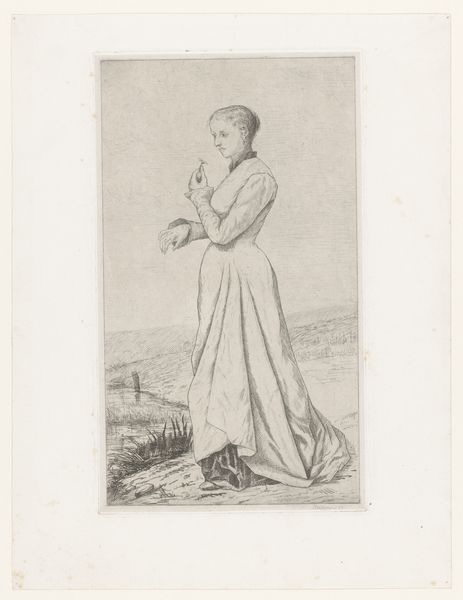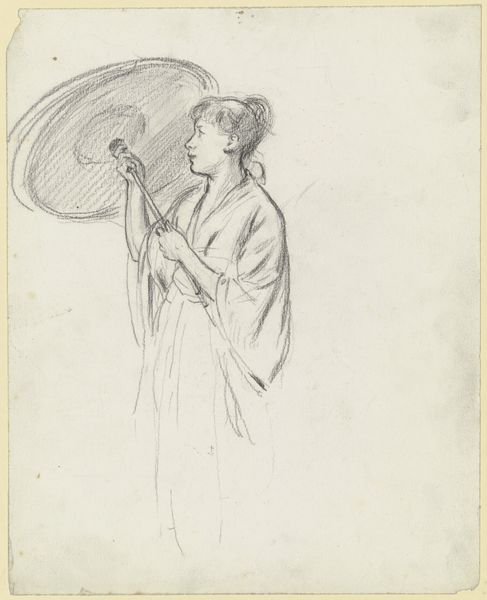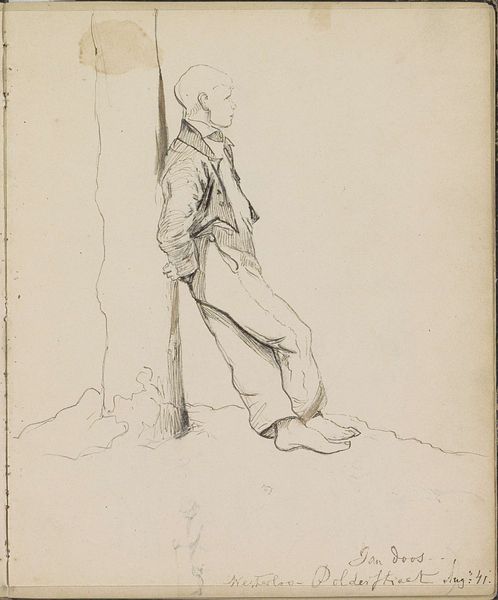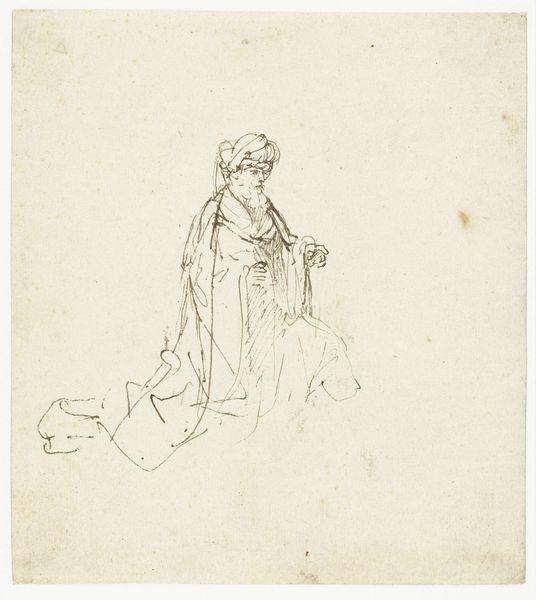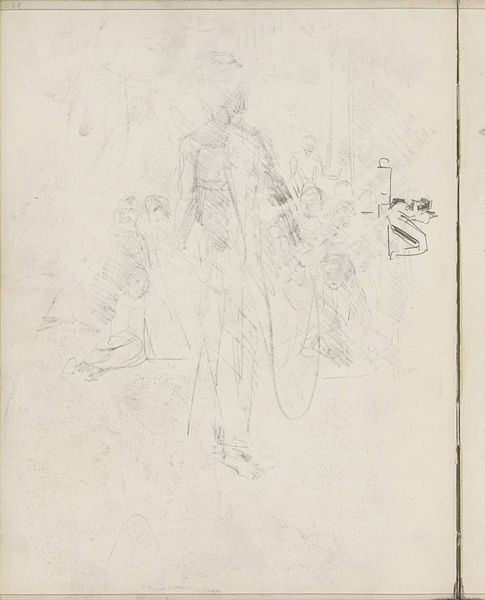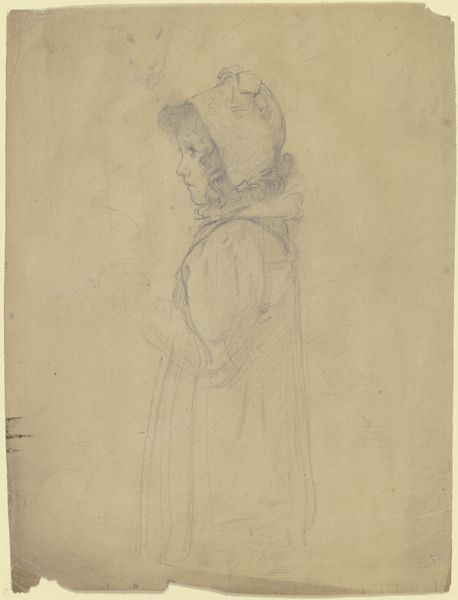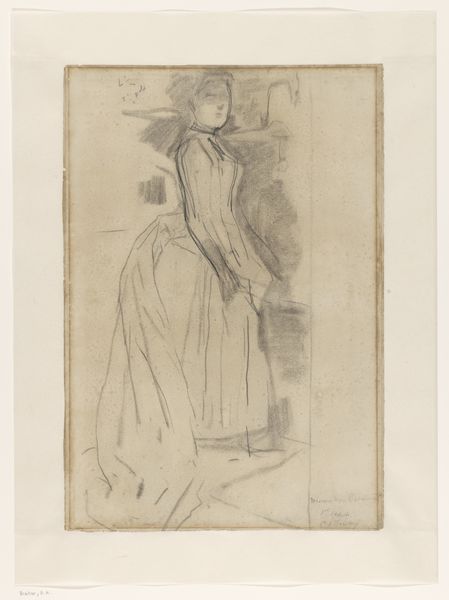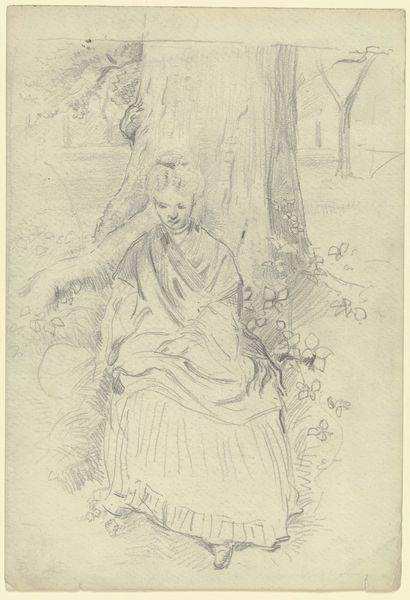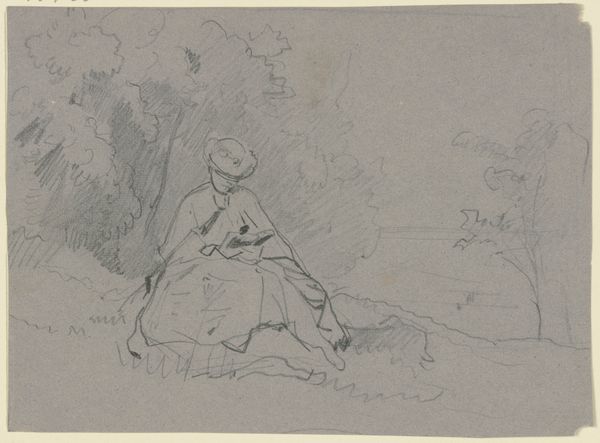
drawing, print, gouache, paper, pencil, graphite
#
portrait
#
drawing
# print
#
gouache
#
pencil sketch
#
landscape
#
paper
#
romanticism
#
pencil
#
graphite
#
sketchbook drawing
Dimensions: 220 × 172 mm
Copyright: Public Domain
Curator: So, here we have Richard Westall’s "Shepherdess," made between 1810 and 1820. It’s currently residing here at the Art Institute of Chicago. Editor: It’s such a delicate piece, rendered in pencil, graphite, and gouache on paper. The overall effect is dreamy and quite ethereal, despite the rustic subject matter. What draws your eye to this work? Curator: Consider the means of production here. The accessible nature of pencil and paper, combined with the layering of gouache, reveals a democratization of art-making practices, breaking down hierarchical distinctions between drawing and painting, and 'high' art and simple craft. Note how labor informs the very image we see: A Shepherdess in the landscape is itself tied to labor and rural economy, a direct material reality of early 19th-century life. How do you perceive this intersection? Editor: That’s a fascinating point! It never occurred to me that the *materials* themselves could challenge social hierarchies. So, the seemingly simple act of choosing accessible materials like pencil and paper allows Westall to blur those boundaries? Curator: Precisely. The availability of such materials opened up artistic expression to a wider range of individuals and perhaps, even challenged the prevailing social structures that often limited artistic pursuits to the elite. Furthermore, observe the Romantic style that you noted initially. How does its emphasis on emotion and the individual connect with this idea of labor? Editor: Perhaps, by portraying the shepherdess as an individual worthy of artistic representation, it elevates her status and recognizes her labor in a way that hadn't been done before? Curator: Exactly! Westall uses accessible material and artistic expression to question existing power structures of the time, democratizing not just *how* art is made but *who* gets depicted within it. This makes Westall's piece far more revolutionary than just a nice drawing. Editor: That gives me so much to think about regarding art production! Thank you. Curator: My pleasure! It’s about how artistic creation engages with societal norms and economic practices that give us deeper insights.
Comments
No comments
Be the first to comment and join the conversation on the ultimate creative platform.

